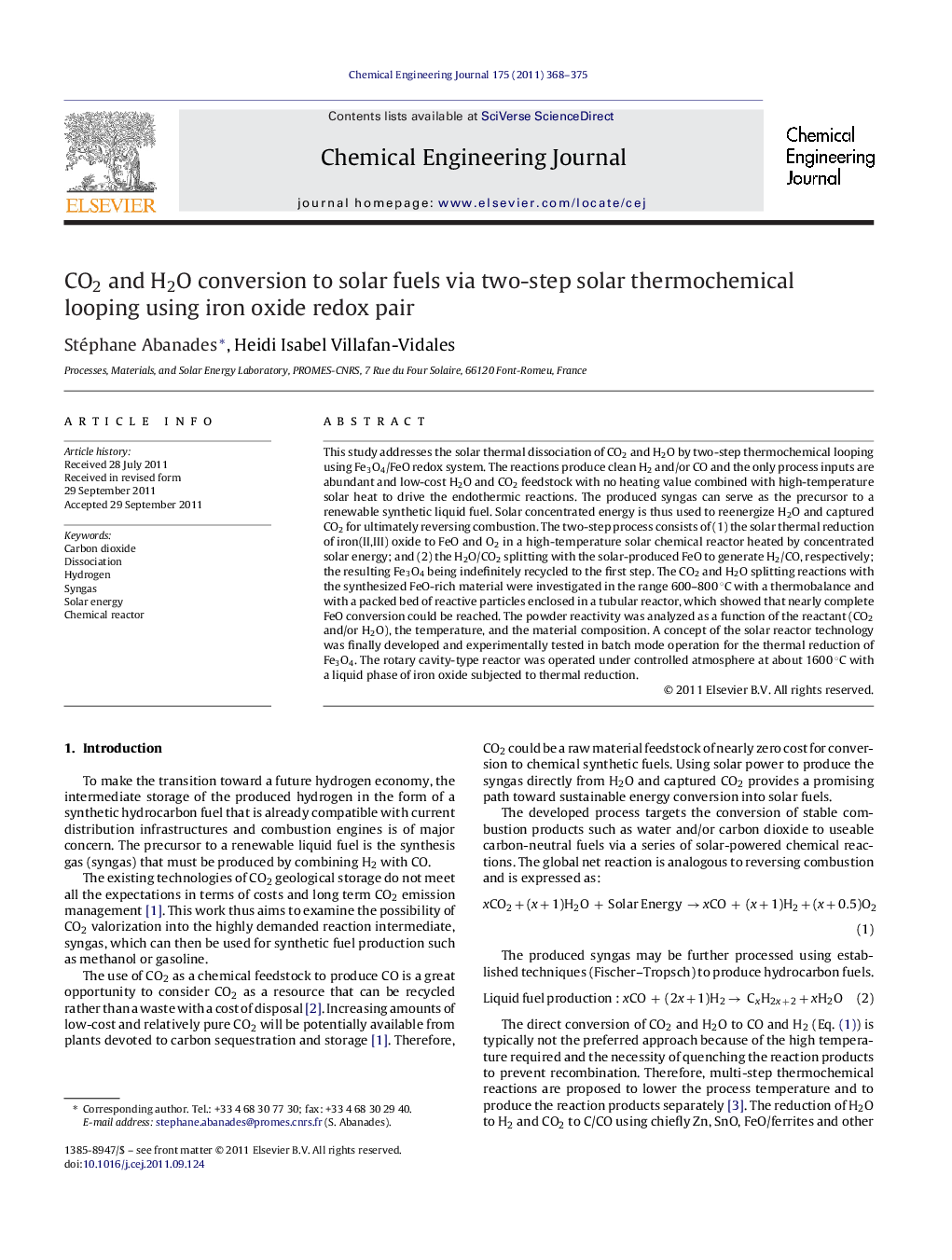| Article ID | Journal | Published Year | Pages | File Type |
|---|---|---|---|---|
| 150993 | Chemical Engineering Journal | 2011 | 8 Pages |
This study addresses the solar thermal dissociation of CO2 and H2O by two-step thermochemical looping using Fe3O4/FeO redox system. The reactions produce clean H2 and/or CO and the only process inputs are abundant and low-cost H2O and CO2 feedstock with no heating value combined with high-temperature solar heat to drive the endothermic reactions. The produced syngas can serve as the precursor to a renewable synthetic liquid fuel. Solar concentrated energy is thus used to reenergize H2O and captured CO2 for ultimately reversing combustion. The two-step process consists of (1) the solar thermal reduction of iron(II,III) oxide to FeO and O2 in a high-temperature solar chemical reactor heated by concentrated solar energy; and (2) the H2O/CO2 splitting with the solar-produced FeO to generate H2/CO, respectively; the resulting Fe3O4 being indefinitely recycled to the first step. The CO2 and H2O splitting reactions with the synthesized FeO-rich material were investigated in the range 600–800 °C with a thermobalance and with a packed bed of reactive particles enclosed in a tubular reactor, which showed that nearly complete FeO conversion could be reached. The powder reactivity was analyzed as a function of the reactant (CO2 and/or H2O), the temperature, and the material composition. A concept of the solar reactor technology was finally developed and experimentally tested in batch mode operation for the thermal reduction of Fe3O4. The rotary cavity-type reactor was operated under controlled atmosphere at about 1600 °C with a liquid phase of iron oxide subjected to thermal reduction.
Graphical abstractFigure optionsDownload full-size imageDownload as PowerPoint slideHighlights► A thermochemical looping process for CO2/H2O reduction based on iron oxides. ► The solar process converts and upgrades low-grade feedstock to high-value solar fuels. ► The thermochemical process produces H2 and CO directly from H2O and captured CO2. ► The high reactivity of solar FeO with H2O/CO2 was demonstrated by thermal analysis. ► A solar chemical reactor for FeO synthesis by solar thermal reduction was developed.
